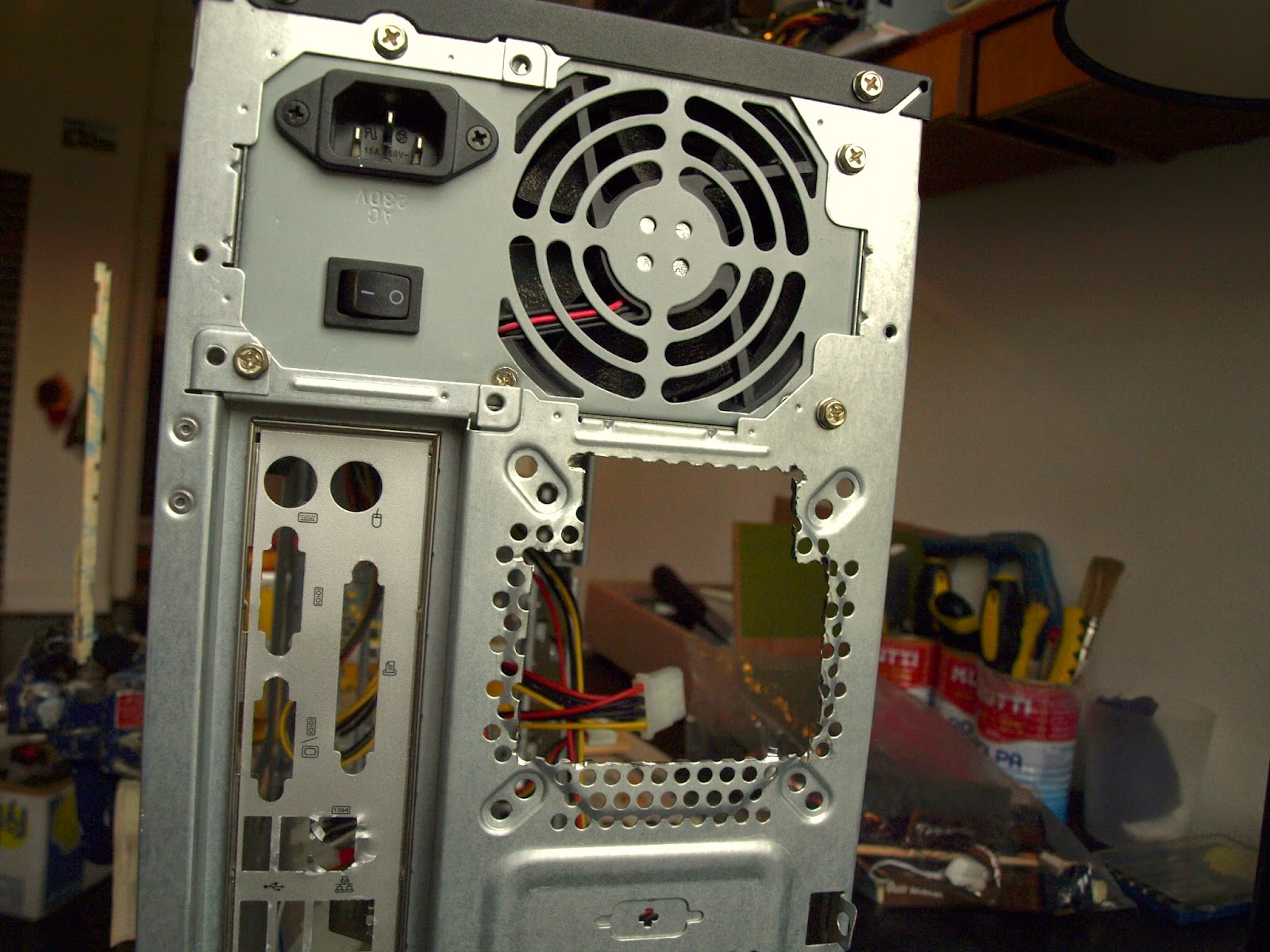In the post at present being posted, the strains suffered in constructing the lid of the Detectron case will be described. It would be pleasing to say this is to warn future Detectron modders, but in honestly the aim is rather to alleviate post-traumatic stress, and, boast a bit.
Hinges, as many things in the physical world, need to be attached to something to work properly. As a first suggestion, an attempt was made to attach them to the Detectron case on one end, and to the lid on the other. Therefore a backpiece was made (more pics here).
This beautiful backpiece with it's extremely tight fit, did not work however, because of curves. The lid as well as case is sporting curved corners, which is pretty, but also means that in combination with the aluminium frame, the revolving axis of the lid needs to sit further out from the top. Therefore, exit beautiful backpiece, and enter second backpiece.
Having renewed faith in this backpiece, the hinges got semi-properly attached by screw, and a quite nice case fan grill and mount was made on the back of it. Careful testing of the function was made using the lid and double sided tape. It seemed to work. So, the only thing left was to glue on the lid.
Gluing plastic on plastic in a cold garage did not work. At least not in the half an hour stipulated in small print on the all purpose glue. Wait - plastic on plastic? Yes, since the hinges are not even, a small spacer was needed to get a flat surface to glue onto the lid. Since this spacer needed to be as small a possible for the lid to open properly, it was decided that the lid of an old ice cream box was just about thick enough. It wasn't. Or at least, didn't stick. Ok, but these things are easy to fix. With some thinned down wooden spacers, and all gluing surfaces sanded to maximize gluing strength, glue round two began.
This time it worked. That is, the gluing of the hinges to the lid worked. The lid, however, did not in any way accept working as a lid. Instead, it folded nicely from the open position all the way until getting stuck by 2-3 mm on the aluminium frame. Curses unmentioned, no conceivable modification could be thought of to fix this issue, except loosening the hinge-backpiece screws quite a bit to allow more freedom of movement. That gave an extremely rattely feel to the entire thing, as was abandoned as way too unsatisfactory.
What now?
Time to start over of course! Off with the cursed hinges. Now the backpiece is sort of redundant, but because of the nice work with the case fan, it will stay for show.
The major fault of the tried hinges was that the revolving axis got too far away from the lid plane. But how can this be solved? Well one way is of course to construct something hinge-like from scratch. This plan involved putting two small nails into the lid to make a new revolving axis, and let this rest on some metal construction on the case. For attaching hinge-like nails to the lid, the go-to method is naturally: gluing.
Perfect. On the case, something now needed to hold these nails up so the lid turns nicely when opened, rather that falling directly onto the motherboard. At first, simply gluing some holders made from the same ventilation grill as used for the air holes was considered. But this solution made it very hard to completely attach and detach the lid when needed, and in effect made it impossible to get the revolving axis completely in line with the closed lid. Therefore, a more flexible solution with adjustable holders was implemented.
Glorious? Yes indeed.
Is this it? No way.
This solution has the downside that since the case is now a bit smaller, getting the lid nails in and on the supports is theoretically impossible. Practically it works with a little force. Since people live in the real world rather than the theoretical, that would have been acceptable if it weren't for another fact.
The. lid. still. doesn't. close.
It turns out that the newly added hinge-supports on the case collide with the thin pieces of wood glued onto the lid to fasten the nails. Right. But since case modding essentially is all about gluing stuff on lids, why not make one last round?
Since it's about time to wrap up and stop ranting, let's just look at these:
Thanks, and good night.



















































